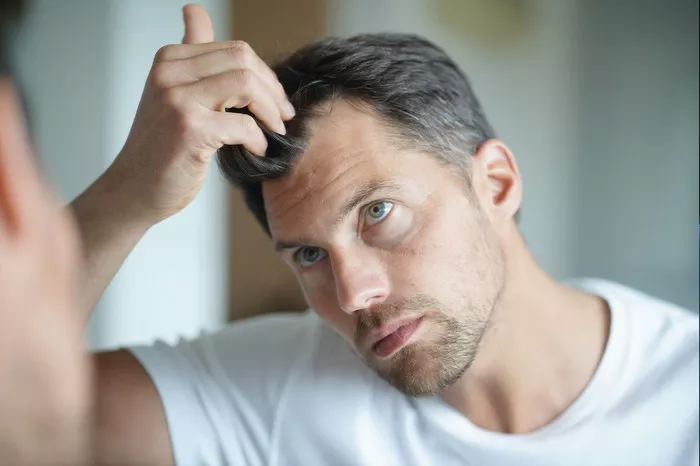Hair loss is a common concern that affects millions of people worldwide. Understanding the various manifestations of hair loss can help individuals identify the issue early and seek appropriate treatment. In this article, we will explore the different ways hair loss presents itself, from gradual thinning to more noticeable patterns. Armed with this knowledge, individuals can take proactive steps to address the condition and maintain healthy and voluminous hair.
1. Gradual Thinning:
One of the initial signs of hair loss is gradual thinning. It often starts at the crown or the top of the head, where the hair becomes less dense and visibly thinner. Over time, the scalp may become more visible through the hair.
2. Receding Hairline:
In men, receding hairline is a common pattern of hair loss. The hairline gradually moves backward, creating a “V” shape on the forehead. This can lead to a more prominent forehead and an older appearance.
3. Widening of the Part:
For women, widening of the part is a noticeable sign of hair loss. As the hair becomes thinner, the part in the hair may appear wider than before.
4. Bald Patches:
Hair loss can also result in the formation of bald patches on the scalp. These areas may be smooth and devoid of hair, and they can vary in size and location.
5. Excessive Hair Shedding:
Excessive hair shedding is another indicator of hair loss. Finding an increased amount of hair on pillows, clothing, or in the shower drain can be concerning.
6. Thinning Eyebrows and Eyelashes:
In some cases, hair loss may also affect the eyebrows and eyelashes. These hairs may become thinner or fall out, leading to sparse eyebrows and eyelashes.
7. Changes in Hair Texture:
Hair loss can alter the texture of the remaining hair. The strands may become finer, weaker, and more prone to breakage.
8. Hair Loss in Specific Patterns:
Certain types of hair loss, such as alopecia areata or traction alopecia, present in distinct patterns. Alopecia areata may cause round or oval patches of hair loss, while traction alopecia results from excessive tension on the hair, leading to hair loss along the hairline or in specific areas.
How to Seek Treatment After Hair Loss
If you are experiencing hair loss, seeking treatment is essential to address the issue effectively. Start by consulting a dermatologist or hair care specialist who can assess your condition and determine the underlying cause of hair loss. Be prepared to provide your medical history, lifestyle habits, and hair care routine for a comprehensive evaluation. Depending on the cause of hair loss, the healthcare professional may recommend medications such as minoxidil or finasteride to promote hair regrowth. Lifestyle changes, like adopting a balanced diet and managing stress, can also positively impact hair health. In more advanced cases, hair restoration therapies such as hair transplant surgery may be considered. Regular follow-ups with your healthcare provider will help monitor progress and adjust the treatment plan as needed. Early intervention is key, so don’t hesitate to seek professional advice if you notice signs of hair loss.
Conclusion
Recognizing the signs and symptoms of hair loss is essential for early intervention and effective management. Gradual thinning, receding hairline, widening of the part, bald patches, excessive hair shedding, thinning eyebrows, eyelashes, and changes in hair texture are some of the visual indicators of hair loss. Understanding these manifestations empowers individuals to seek appropriate treatments, such as medications, lifestyle changes, or hair restoration therapies, to address the issue and restore hair health. It is crucial to consult a dermatologist or hair care professional for accurate diagnosis and personalized treatment plans. By staying vigilant and proactive, individuals can preserve their hair and maintain confidence in their appearance despite experiencing hair loss.


